When temperatures drop and the air grows dry, even the most seasoned woodworkers and landscapers know that winter wood cutting becomes a different kind of challenge. Frozen fibers, moisture changes, and sap stiffness make wood tougher, heavier, and less forgiving. A job that feels smooth in summer can suddenly turn into a tug-of-war between tool and timber.
That’s why achieving clean, precise cuts in cold weather isn’t just about skill, it’s about using the right reciprocating saw blades built for the season and the task.
- 1. Understanding the Winter Cutting Challenge with Reciprocating Saw Blades
- 2. Japanese Tooth Geometry: Designed for Precision
- 3. Built for Tough Conditions
- 4. Tips for Clean Cuts in Cold Weather
- 5. Why the Right Blade Matters
- 6. From Tree Trimming to Trail Maintenance
- 7. Professional Results, Season After Season
- 8. Upgrade Your Winter Cutting Setup
Understanding the Winter Cutting Challenge with Reciprocating Saw Blades
Wood behaves differently in winter. Low temperatures can make it harder and more brittle, while frozen sap creates uneven resistance. The result? More vibration, splintering, and jagged cuts, especially when using a blade not optimized for outdoor, cold-weather use.
When pruning trees or cutting branches in frosty conditions, precision becomes essential. Clean cuts protect tree health and reduce regrowth damage, while a smooth surface prevents water or frost from seeping in. Using a high-quality pruning saw blade ensures the job stays efficient, clean, and consistent even in challenging conditions.
Japanese Tooth Geometry: Designed for Precision

The secret behind clean winter cuts lies in the tooth design. EZARC’s Tree Trimming/Wood Cutting – Japanese Teeth 6 TPI Reciprocating Saw Blades take inspiration from traditional Japanese hand saws, tools famous for their razor-sharp pull-cut efficiency and accuracy.
This reciprocating saw blade features 6 teeth per inch (TPI), each precision-ground to form an aggressive, arc-shaped edge. The teeth alternate in set and depth, allowing smoother chip removal and faster penetration through frozen or dense wood. The result is a blade that glides through tough, cold material without tearing or splintering it.
Japanese-style teeth are especially beneficial for winter wood cutting because they require less downward force. Instead of pushing through resistance, the blade slices efficiently on the pull stroke, maintaining control and minimizing vibration.
Built for Tough Conditions
EZARC’s engineering team designed this reciprocating saw blade for professionals and serious DIYers who work outdoors year-round. The construction features:
- High-carbon steel (HCS) for flexibility and durability in cold conditions
- Arc-edge design that maximizes surface contact and cutting speed
- Rust-resistant coating to combat moisture and resin buildup
- Optimized length (15 inches) for trimming larger branches and logs without binding
These features make it a go-to choice for anyone serious about woodworking in winter, whether you’re maintaining trails, pruning fruit trees, or trimming evergreens before the holidays.
When paired with a reliable reciprocating saw, this blade doesn’t just cut, it performs. Even when temperatures drop, the blade stays sharp, steady, and smooth.
Tips for Clean Cuts in Cold Weather

Quality reciprocating saw blades set the foundation, but proper technique ensures lasting results. Here’s how to get the most out of your winter cutting setup:
1. Keep the Blade Clean and Dry
Sap, ice, and sawdust can cling to the blade during use. Wipe it clean between cuts to prevent drag and maintain precision.
2. Let the Saw Do the Work
Avoid forcing the blade. High-quality pruning saw blades like EZARC’s are designed to cut efficiently with steady motion, not brute strength.
3. Adjust Your Cutting Speed
In colder conditions, wood is less forgiving. A slightly slower, more controlled stroke helps you avoid splintering and maintain cleaner lines.
4. Cut at the Right Angle
Position the blade at a slight downward angle to allow the teeth to engage naturally and clear chips efficiently.
5. Store Properly After Use
Winter moisture can cause corrosion. Store your outdoor cutting tools in a dry place and lightly oil them if needed to prolong their lifespan.
Why the Right Blade Matters

When working outdoors in cold weather, not all saw blades perform the same. A standard demolition blade might handle mixed materials but will struggle to make fine, clean cuts on frozen or living wood.
That’s where the EZARC Japanese Teeth Reciprocating Saw Blade stands apart, it’s purpose-built for wood cutting and pruning with control and precision. Whether you’re tackling dense hardwoods or green branches, the difference shows immediately: smoother strokes, cleaner finishes, and less fatigue.
If you’re unsure how to match a saw blade to your project, check out EZARC’s detailed guide on How to Select the Right Sawzall Blade. It breaks down blade types, materials, and tooth counts to help you make the best choice every time.
From Tree Trimming to Trail Maintenance
Winter isn’t just for tree trimming, it’s also the time for maintenance, preparation, and shaping outdoor environments. Landscapers and forestry professionals often rely on reciprocating saw blades for cutting back overgrown trails, removing dead branches, and managing storm damage.
Because the EZARC 6 TPI blade balances speed and precision, it’s versatile enough for both winter wood cutting and general woodworking in winter. It keeps performance high even when temperatures drop, allowing users to work efficiently without losing control or accuracy.
Its Japanese-style teeth ensure every cut stays clean, a small but critical detail for maintaining the long-term health of your trees and tools alike.
Professional Results, Season After Season
The hallmark of a great reciprocating saw blade isn’t just its sharpness, it’s consistency. EZARC’s Japanese Teeth design maintains edge integrity even under pressure, meaning you can rely on it through repeated seasonal use.
Each cut stays predictable, clean, and controlled, reducing splintering, improving finish quality, and making every project feel professional. Whether you’re shaping lumber for a winter woodworking project or pruning a frozen orchard, this blade delivers the reliability EZARC is known for.
Upgrade Your Winter Cutting Setup
If your saw isn’t performing the way it used to, or you’re still using a general-purpose blade for cold-weather work, now’s the time to upgrade. Explore the full EZARC Reciprocating Saw Blades Collection to find the ideal blade for every cutting condition, from aggressive demolition work to fine, precise pruning.
And for anyone tackling winter pruning or woodworking outdoors, the EZARC Tree Trimming/Wood Cutting – Japanese Teeth 6 TPI Reciprocating Saw Blade is built to handle the season’s toughest cuts with precision and ease.
Final Thoughts
Clean, precise cuts in cold weather come from understanding your materials and trusting your tools. Winter changes how wood behaves, but with the right reciprocating saw blades, you stay in control.
EZARC’s Japanese Teeth design brings craftsmanship and engineering together, helping you work smarter, not harder, no matter the season.
Because in winter, precision isn’t optional, it’s the difference between a rough job and a perfect finish.

 Oscillating Multi-Tool Blades
Oscillating Multi-Tool Blades
 Reciprocating Saw Blades
Reciprocating Saw Blades
 Cutting & Grinding
Cutting & Grinding
 Hole Saw
Hole Saw
 Drilling
Drilling
 Sanding & Polishing
Sanding & Polishing
 Hand Tools
Hand Tools
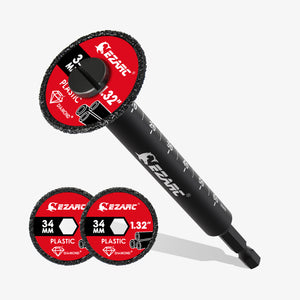 NEW ARRIVALS
NEW ARRIVALS
 Metalworking & Fabrication
Metalworking & Fabrication
 Woodworking & Furniture Making
Woodworking & Furniture Making
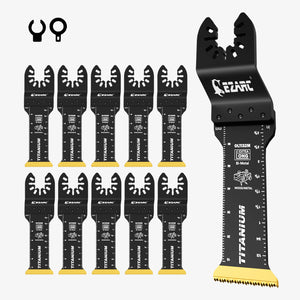 Plumbing & Electrical Installation
Plumbing & Electrical Installation
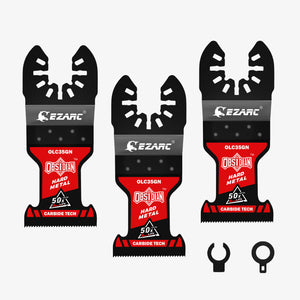 Construction & Renovation
Construction & Renovation
 Window & Door Repair
Window & Door Repair
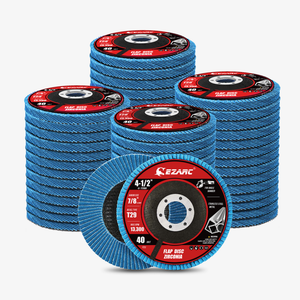 Rust Removal & Surface Cleaning
Rust Removal & Surface Cleaning
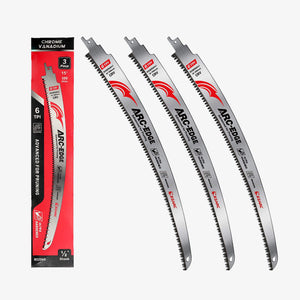 Gardening & Outdoor Projects
Gardening & Outdoor Projects
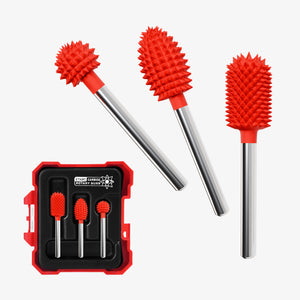 Art & Creative Projects
Art & Creative Projects























Leave a comment
This site is protected by hCaptcha and the hCaptcha Privacy Policy and Terms of Service apply.